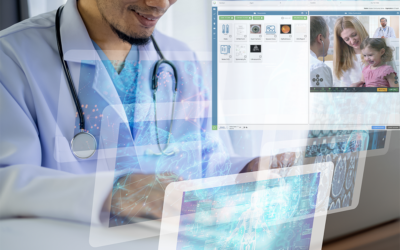For skilled nursing facilities (SNFs) across the U.S., the overwhelming volume of patients continues to rise, putting an additional strain on already scarce staffing resources.
While this challenge has been present in the healthcare industry for several years, it has begun to heavily impact SNFs, especially since the outbreak of COVID-19 and necessary safety restrictions related to capacity. The Skilled Nursing Outlook Report revealed that 54% of respondents consider staffing difficulties to be the most pressing challenge in their field, ahead of both stress stemming from the occupancy itself and the integration of payment-driven pay models.
To optimize staffing and provide a higher quality of patient care, SNFs must begin to look toward digital solutions as a means to address these shortages. The utilization of telemedicine and telehealth technology will become increasingly necessary in the years ahead as a means of more effectively managing costs and allocating labor.
Defining the use case for telemedicine at SNFs
Telemedicine involves the use of digital communication technology, medical devices and software to provide clinical services to patients without an in-person visit.
Telehealth solutions range in their ability to address many medical concerns and can be as simple as a video visit. However, they also offer more clinical capabilities to address higher acuity conditions. Through the deployment of telehealth systems with connected medical devices, providers can examine a patient remotely, and are often able to assess and treat the condition without an in-person appointment.
Tele Hospitalists using telemedicine today have reported that about 90% of the conditions they’re called to treat are being managed via telemedicine, avoiding patient transport and hospital readmission.
Telemedicine and telehealth products give SNFs and other healthcare providers the tools they need to efficiently, flexibly and thoroughly treat those in need within their preferred setting of care.
Automating rounds and administrative duties
Virtual care strategies leveraging both telemedicine and telehealth solutions offer facilities an array of benefits, including clinical care workflow and improved resource utilization.
Across the country, more than 15,500 SNFs provide care to over 1.35 million Americans, providing rehabilitation-based care and assisting with Activities of Daily Living (ADLs), according to Commonwealth Medicine.
Equally important as the high-acuity care provided by SNFs are the necessary rounds done to check vitals and monitor overall patient conditions. However, there is a strong likelihood that overwhelmed physicians are more likely to make mistakes during these check-ins and also while handling administrative tasks such as updating patient health history.
Not only can human error occur during these highly manual checks, but there is also the possibility that a staff member could miss signs or symptoms of deteriorating patient condition. One report from the International Journal of Nursing Studies found that nurses often report missing essential patient surveillance due to high workload. About 35% of scheduled vital signs assessments were delayed or missed.
About 35% of scheduled vital signs assessments were delayed or missed when they being check manually.
By deploying a solution to automate such tasks, vitals can be captured, documented and closely watched with a higher degree of accuracy and efficiency. Such regular assessments provide early indications of disease-related changes that can be addressed long before they reach a more critical stage.
Since the onset of COVID-19, taking vitals multiple times a day has become even more of a strain on your staff and resources. Nursing time can be better utilized for high-acuity tasks. In SNF settings, telemedicine improves the delivery of care and frees care teams to focus more on direct patient interaction, decreasing the potential risk of error and liability.

Deploying the right solution
Telemedicine is becoming increasingly popular across the healthcare industry, and for good reason. The tools can improve the efficiency and accuracy of care teams, while also achieving a higher quality of care and convenience for patients.
However, many of you might be concerned about the process of introducing new technologies to your staff. Fear not. The key to success is finding a telemedicine partner who will work with you and your team. The telehealth platform you utilize to deploy virtual care should integrate seamlessly into your existing workflow to help minimize the learning curve for new users. Also, training staff on best practices helps them optimize their time as well as your valuable resources.
AMD Global Telemedicine can help. Our telemedicine and telehealth technology solutions are being used in over 600 post-acute care facilities. For over 30 years, we’ve been devoted to revolutionizing remote patient assessment and care through telemedicine. We’re dedicated to providing your care facilities with the tools you need to create a scalable program tailored to the needs of your organization and patients.
Our newest product, AGNES Vitals Connect, helps automate processes such as taking and documenting vitals, cutting the time spent on daily rounds in half and saving costs related to staffing requirements and resources.
If you are interested in learning more about AMD Global Telemedicine, our products or telemedicine technologies, contact us today and find out how we can help improve your telehealth program.






